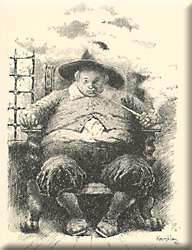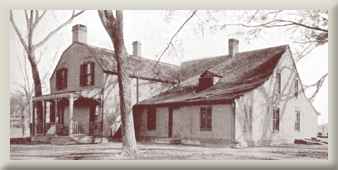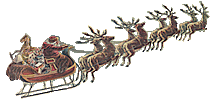Robert Livingston, the first Lord of Livingston Manor, and Henry Jr.'s great grandfather,
was pure Scots, but the rest of Henry Jr.'s blood was pretty well pure Dutch, with just a trace
of Swedish thrown in for variety. Poughkeepsie was heavily Dutch, and the language was still
spoken among some of the inhabitants, including Susannah's Conklin family.
 The Dutch were companionable people who took the evening air on their front stoop. Holland
was a land of religious tolerance and educational opportunities. When the Dutch came to
America, they still looked back to Europe as the determiner of fashion. As much as their
incomes would allow, they dressed richly in imported materials. These petticoats and
sleeves were so valued, in fact, that they were specifically called out in estate inventories.
Worried about how citizens were spending their hardearned money, the New Amsterdam government
attempted to forbid the use of gold or silver fringe on clothing. How effective that was we
can easily imagine.
The Dutch were companionable people who took the evening air on their front stoop. Holland
was a land of religious tolerance and educational opportunities. When the Dutch came to
America, they still looked back to Europe as the determiner of fashion. As much as their
incomes would allow, they dressed richly in imported materials. These petticoats and
sleeves were so valued, in fact, that they were specifically called out in estate inventories.
Worried about how citizens were spending their hardearned money, the New Amsterdam government
attempted to forbid the use of gold or silver fringe on clothing. How effective that was we
can easily imagine.
Houses were usually of brick and stone, the glazed Holland brick creating an attractive look.
Practical people, the Dutch had the brick brought from Holland as ballast for the ships
traveling between the new and old countries. Dutch houses of wood frequently had a gable
end of brick facing the street. Inside walls were
plastered, but the ceiling was frequently left with the wooden beams scoured clean. Looking
at the wills and the inventories done for probate is to be amazed at the sheer quantity and
quality of what filled the 17th New Amsterdam homes of the moderate and well-to-do. Rooms
were crowded with furniture brought over from Europe. Besides cabinets to hold china or
porcelain, the special company room would often also have a bed, and it wasn't unknown for
an inventory to list a bed in the dining room.
It's almost impossible to look back to this New York Dutch culture without our current view
being filtered
through Washington Irving's Knickerbocker's A History of New York from the
Beginning of the World to the End of the Dutch Dynasty, which he wrote in 1809.
This wonderfully witty and humorous look at the aristocratic ancestors on which
New York high society doted did such a brilliant job of
satire, that descendants of the actual ancestors who had been skewered glowed with pride that their
ancestors had made it into Irving's book.
 Knickerbocker explains that he created his history in much the same manner his great
grandfather, Hermanus Van Clattercop, built a church. When awarded the job,
Van Clattercop's first act was to purchase a box of long pipes, a new spitting box, and a
sizable quantity of the best Virginia tobacco. He then sat down and smoked for three months.
Only after thinking through the problem did he begin hiking through the major cities of Holland,
examining each and every church along the way. Finally he arrived at the Rotterdam site on which
he was to build the church. There he used up another three months in walking around the site and
examining it from every possible angle and from every possible vantage point. With the fascinated
crowd gathered around him, Van Clattercop pulled off his coat and five layers of britches, and
finally strode forward to lay the corner-stone of the church. Thirteen months to the day from when he
took on the assignment! And so did Knickerbocker see the preparation by which he would write "a
very large history out of a small subject."
Knickerbocker explains that he created his history in much the same manner his great
grandfather, Hermanus Van Clattercop, built a church. When awarded the job,
Van Clattercop's first act was to purchase a box of long pipes, a new spitting box, and a
sizable quantity of the best Virginia tobacco. He then sat down and smoked for three months.
Only after thinking through the problem did he begin hiking through the major cities of Holland,
examining each and every church along the way. Finally he arrived at the Rotterdam site on which
he was to build the church. There he used up another three months in walking around the site and
examining it from every possible angle and from every possible vantage point. With the fascinated
crowd gathered around him, Van Clattercop pulled off his coat and five layers of britches, and
finally strode forward to lay the corner-stone of the church. Thirteen months to the day from when he
took on the assignment! And so did Knickerbocker see the preparation by which he would write "a
very large history out of a small subject."
Knickerbocker is as fun to read today as it was then, but it does have to carry on its conscience
a set of Dutch stereotypes into which it's just too easy to fall. It's those very stereotypes
that appear in Moore's story of the rotund, pipe-smoking Dutchman that Moore says was the inspiration
for the Santa Claus of A Visit From St. Nicholas.
Back To Top
But put those stereotypes beside Henry Jr., and they make no sense at all.
Henry was hardworking and hard playing. He was a family man, with no ambition greater than
the desire to make his family happy. He was a strong believer in the equality of women (remember
his father's tombstone!), and in their education; and he believed in the value of the individual.
He spoke of Indians with the greatest respect and familiarity, and he was tolerant of the
beliefs of others.
In fact, the more you learn about Henry, the more he seems to be a man completely outside of his time;
the embodiment of a 21st century soul living in an
18th/19th century man. But if you think that, it's because even your teachers have been conditioned
by Knickerbocker and his slow moving Dutch.
Henry was, rather, mainstream New York Dutch. And we can see that for ourselves in the memories
of Ann MacVicar Grant, a young woman born in 1755 in Scotland, who was brought to America by her
father, a soldier with the British army. Duncan MacVicar left his daughter with her aunt,
Madame Margaretta Schuyler. Madame was a Schuyler to her bones, the daughter of John Schuyler
and the wife of her first cousin, Philip Schuyler. Madame was also a first cousin of Henry Jr.,
though of his grandparents' generation. Her grandparents,
Philip Schuyler and Margaretta van Slichtenhorst,
were Henry Jr.'s great-great grandparents.
In Memoirs of an American Lady, Ann remembers
her childhood around the Schuyler family, and her memories of their attitudes closely mirror
those of Henry Jr., who was only seven years older than Ann. Ann wrote as an adult in Scotland,
forced to support her children after the death of her husband, Reverend James Grant. She was
so highly respected that Walter Scott drew up the memorial to win for her a yearly pension
from King George IV.
Ann's point of view was that of an outsider in a close knit community, and was colored
by the hero worship of a child for an adult. As for Margaretta Schuyler,
or Madam, as she was called by Ann, she was drawn to the little girl by their shared love of
poetry. Rather than writing about history or geography or great events, Ann wrote about the
people and their lives.
One of her most interesting descriptions is of the way children's
interactions were structured through a social mechanism known as a "company."
In a small community, it's important that young people fall in love with
the right people, and don't fall in love with the wrong. First cousin marriages happened
often enough as it was. A company was made up of an equal number of boys and girls, of a
range of ages.
There could be only one child from a given family in any company, and companies stayed together
for years. They competed for decorating baskets, for gathering berries, and for all the small
fun activities of childhood. And twice a year the company would be invited to a child's house
for a formal party. Ann describes this with the sad wisdom of the outsider never invited to
enjoy one of these coveted events. And, naturally enough, when a child grew old enough to marry,
they usually chose someone from their own company.
The Schuyler property was along an old Indian trail, and the relationship between the Schuylers
and the Indians was close. In summer, there was often a small Indian community that
would settle opposite the Schuyler house, The Flatts. The women would make items that they would
sell to travelers or to the Schuylers. Ann describes one of the Schuyler women as learning the
Indian language.

Peter Schuyler, Madam's uncle, was given the name of Quidor, or "brother." As mayor of Albany,
Quidor headed the Albany Commissioners for Indian Affairs, and he was the one who escorted the
four Iroquois Kings to the Court of Queen Ann in 1710. For years after his death, negotiations
were frequently conducted in his name.
Back To Top



![]() Copyright © 2003, InterMedia Enterprises
Copyright © 2003, InterMedia Enterprises